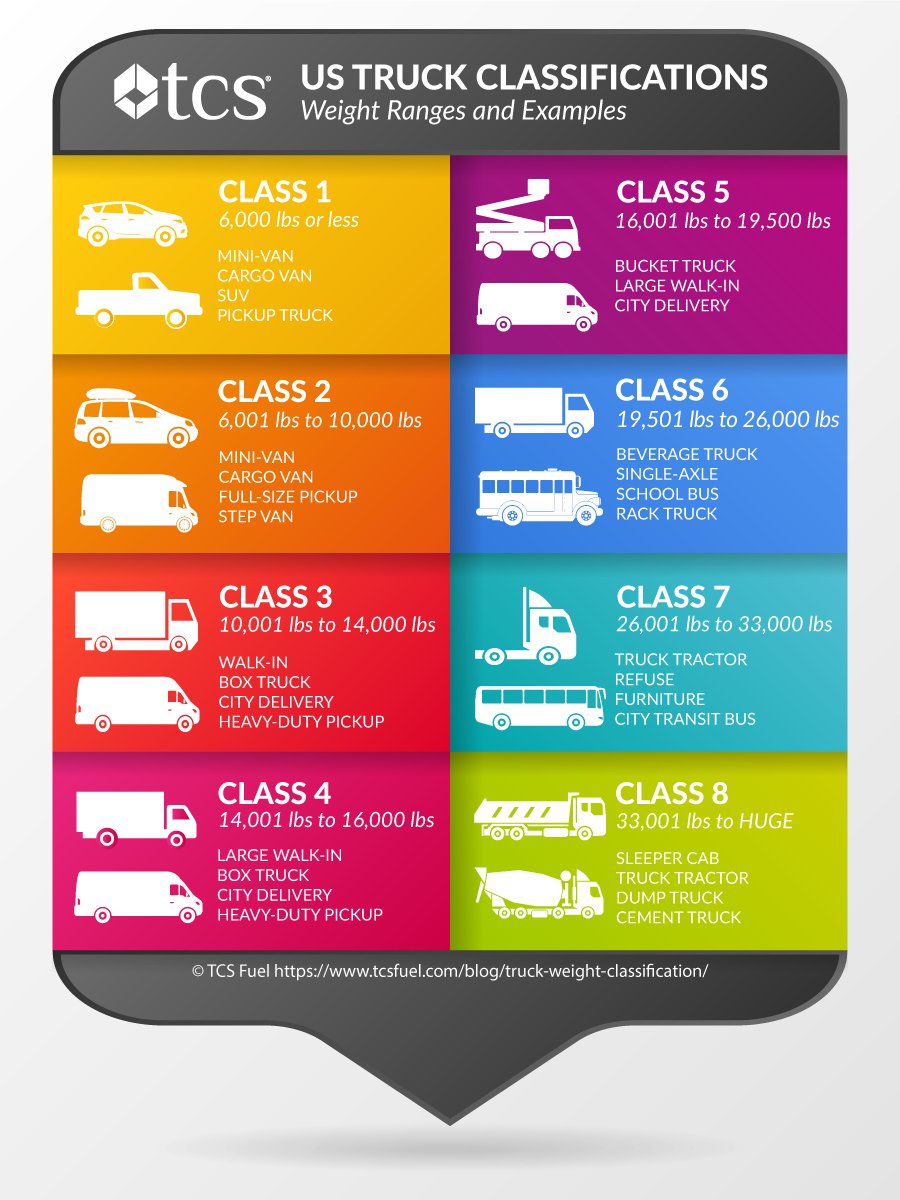A Guide to Truck Weight, Classification, and Uses
by Mario Tarradell | June 22, 2020

A Guide to Truck Weight, Classification, and Uses
We Americans love our trucks – from the sturdy pickup to the mighty 18-wheeler. Trucks are a symbol of Americana. They represent the hard-work, can-do attitude that has been a hallmark of this country for many decades.
Americans also love truckers, especially since trucks move 71% of all the freight in this country. That means most of us use something in our daily lives that gets to us by a trucker. Yet perhaps many folks see a truck and, well, just see a truck. Trucks, however, are varied vehicles. They have different weights and purposes and get classified differently depending on both.
So, let’s look at trucks – truck weight, truck classification, and truck uses. Consider this your one-stop truck guide.
How Much Does a Semi-Truck Weigh?
A semi-truck hooked up to an empty trailer weighs around 35,000 pounds. The weight maximum for a semi-truck with a loaded trailer legally allowed in the United States is 80,000 pounds. A semi-truck without a trailer weighs between 10,000 and 25,000 pounds, depending on the size.
How Much Does an 18-Wheeler Weigh?
An 18-wheeler is a tractor-trailer unit. That’s a fancy way of saying it’s a semi-truck with a trailer attached to it. When you connect the two, you can count 18 wheels. So, the weight of an 18-wheeler is about 35,000 pounds empty and can be no more than 80,000 pounds loaded.
How Much Does a Tractor-Trailer Weigh?
Think of a tractor-trailer as a loaded semi-truck or a loaded 18-wheeler. That means the weight of a tractor-trailer is approximately 35,000 pounds empty and up to 80,000 pounds fully loaded.
How Does Truck Classification Work?
Truck classification is based on the gross vehicle weight rating (GVWR), which considers the maximum truck weight and what it can carry fully loaded (including fuel, cargo, passenger, etc.). Truck classification regulates safety. It is also used for commercial designation and vehicle registration. Check out the sizes and classes of trucks:
-
- Light trucks – They are in classes 1 to 3 and are usually non-commercial vehicles. Think minivans, SUVs, pickup trucks, etc.
- Medium trucks – Most medium trucks are used commercially, and they encompass classes 4, 5, and 6.
- Class 4 trucks weigh between 14,001 and 16,000 pounds and include Ford E-450 passenger van, F-450 super duty pickup, box trucks, and city delivery trucks.
- Class 5 trucks weigh from 16,001 to 19,500 pounds, and include Ford F-550, large walk-in trucks, delivery trucks, bucket trucks, and cherry pickers.
- Class 6 trucks weigh between 19,501 and 26,000 pounds. These are medium-duty commercial trucks such as single-axle, beverage trucks, and rack trucks. School buses are class 6, too.

- Heavy-duty trucks – We’ve reached the motherload, the big rigs, which would be classes 7 and 8.
- Class 7 trucks weigh from 26,001 to 33,000 pounds and usually have three axles or more. Think street sweepers, garbage trucks, city transit buses, furniture trucks, and small semi-trucks.
- Class 8 is pretty much all the rest. We’re talking really huge trucks weighing more than 33,001 pounds. These trucks surpass heavy duty and move into severe duty. So, these would be cement trucks, dump trucks, and big rigs (Freightliners, Kenworths, Peterbilts, etc.).
Trucks, with all their different weights, classifications, and uses, are all very much American. They are part of the homegrown landscape just like barbecue, apple pie, and football games. No wonder Americans love their trucks.
Truckers need diesel fuel to deliver the goods to all Americans. At TCS Fuel, we want to save owner-operators, small trucking companies, and large fleets money at the pump. Are you ready for huge savings with the TCS Fuel Card? We are ready for you! Visit our website or give us a call at 844-827-7705.
